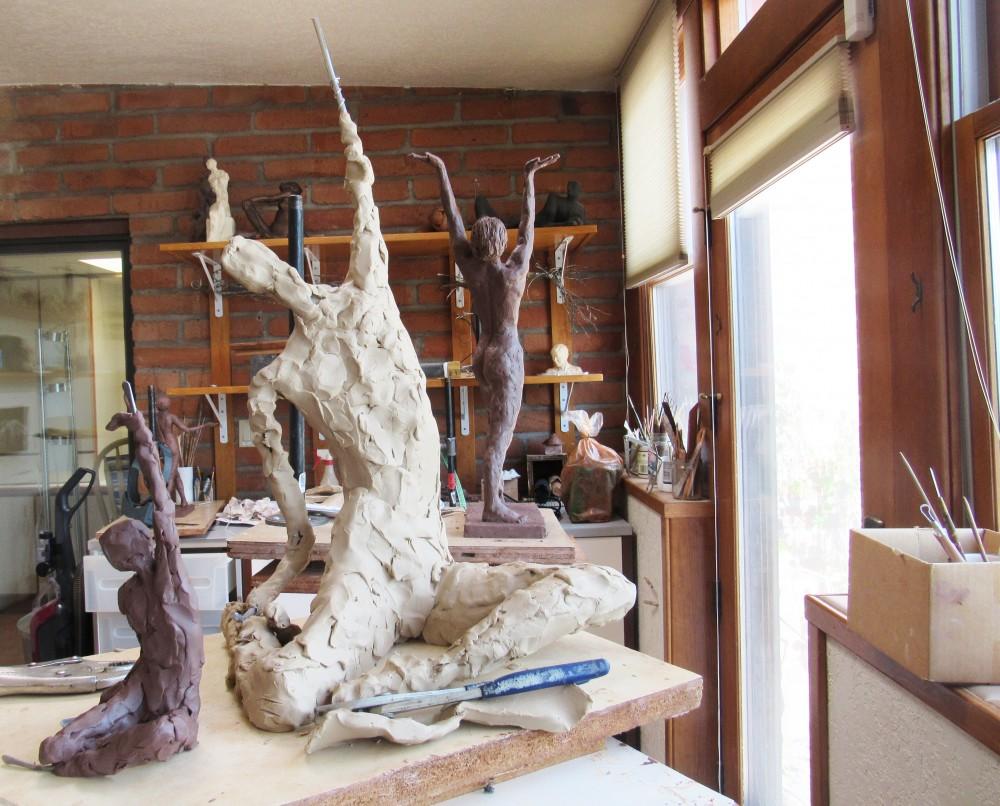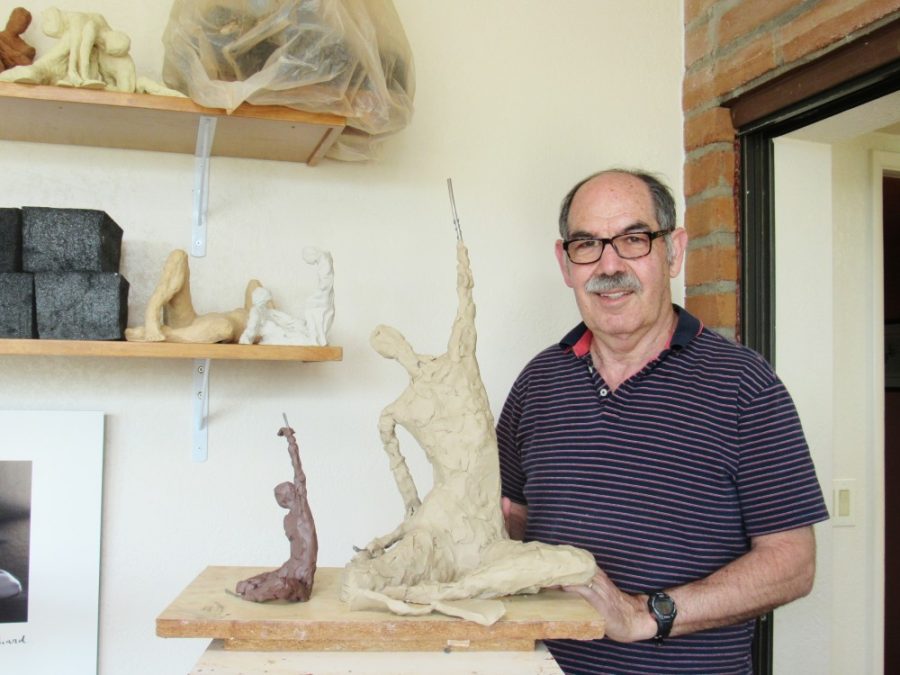Neil Weinstein, a Tucson resident who uses University of Arizona dancers as inspiration for his sculptures, is one of 40 artists who will be featured in the first Sculpture Festival Show and Sale.
The festival, which will be held at Brandi Fenton Memorial Park on Saturday, April 7, and Sunday, April 8, is a celebration of local artists and an opportunity to increase awareness of sculpture within the community. Free and open to the public, the festival will also include music, food trucks and artistic demonstrations.
Weinstein first became interested in sculpting almost 40 years ago during a vacation to Alaska with his wife, inspired by the wooden art pieces he saw.
“I loved the masks and the carved wooden bowls, and I thought I’d try to make them,” Weinstein said. “But I didn’t have any training, so I basically tried to copy museum pieces, and I did that at a very infrequent level because I was still working full time.”
However, some of the pieces Weinstein would try to recreate, especially the wooden masks that imitated human faces, proved to be too challenging to keep up as a hobby. Weinstein eventually decided to try clay sculpting instead.
“With wood, you can’t put it back if you take out too much,” Weinstein said. “So eventually I decided to try sculpting in clay and took a clay sculpting class and loved the freedom to be able to put something back if I got it wrong the first time.”
RELATED: UA alum shot for the stars, now she gets to work with them
Weinstein originally received his Bachelor’s degree in chemistry from the University of Wisconsin-Madison and went on to get a Ph.D. in chemistry and physics from Harvard University.
Weinstein then went to work as a behavioral scientist for the Human Ecology Department at Rutgers University in New Jersey. Weinstein continued working in behavioral health sciences up until his retirement.
He was never a part of a formal art program, but he has taken various classes and workshops in sculpting. He said sculpting is more of a serious hobby for him than a career choice, and he only began practicing on a regular basis when he retired and moved to Arizona.
“I had started clay sculpting probably 10 years before I retired but not very frequently because I didn’t have any place in our home where I could sculpt,” Weinstein said.
He and his wife, Carol, decided to move to Tucson after several sabbatical trips they took to Arizona before they retired in 2005.
“We had spent a fair amount of time in Tucson, and we loved it,” Weinstein said. “It had the combination of outdoors, the university and a reasonable cost of living.”
However, Weinstein said he and his wife are only in Tucson nine months out of the year. For summer, they travel to the East Coast to spend time with their two daughters and grandchildren.
“I guess we’re reverse snowbirds,” Weinstein said.

His original inspiration for creating sculptures of the human body came when he saw some of Ruth Bernhard’s photographs.
“I saw a book of her photographs, which were very sculptural,” Weinstein said. “They really focused on the curves and the lines, and I thought, ‘Gee, I really want to learn how to sculpt in clay and do things like that,’” Weinstein said.
Weinstein uses models to demonstrate the poses he wants to recreate. For every sculpture, Weinstein said it takes him approximately 15 hours to complete.
This time frame is usually divided into several three-hour sessions, in which the model will hold the pose for about 20 minutes at a time. Weinstein usually hires UA dance students to model for the sculptures.
Weinstein said he has worked with anywhere from 20–40 UA dance students since he began sculpting.
“They’re nice people and they’re used to working hard, so if there’s a pose that requires more of a stretch, they’re willing to give it a try,” Weinstein said.
RELATED: From objects to people to exhibit
Emily Sutton, a junior dance major at the UA, has been working as a model for Weinstein since the beginning of the Fall 2017 semester. In that time, Sutton said she has helped Weinstein with two different projects. The first project involved four separate sculptures that Sutton posed for.
“I came in mid-project when he was already half way done with them so I just kind of took over,” Sutton said.
Sutton said the second project she modeled for was the first time she got to see the sculpting process from the beginning.
“When I came in [for the first project], they were already kind of done; he was just putting finishing touches on them,” Sutton said. “But the one we just started, I saw him start with just wire, so it was really interesting to see him make something from nothing.”
Weinstein uses a metal wire skeleton to support his sculptures. He then constructs the sculpture around the wire frame.
He will sometimes donate his sculptures to charity auctions or sell them to people who see them in his home or at shows. but he does not put a lot of emphasis on retailing his pieces.
“I don’t spend a lot of energy in marketing; it’s really a serious hobby more than an occupation,” Weinstein said.
This upcoming event will be one of the biggest sculpting shows for Tucson and for Weinstein.
Follow Sarah Workman on Twitter









